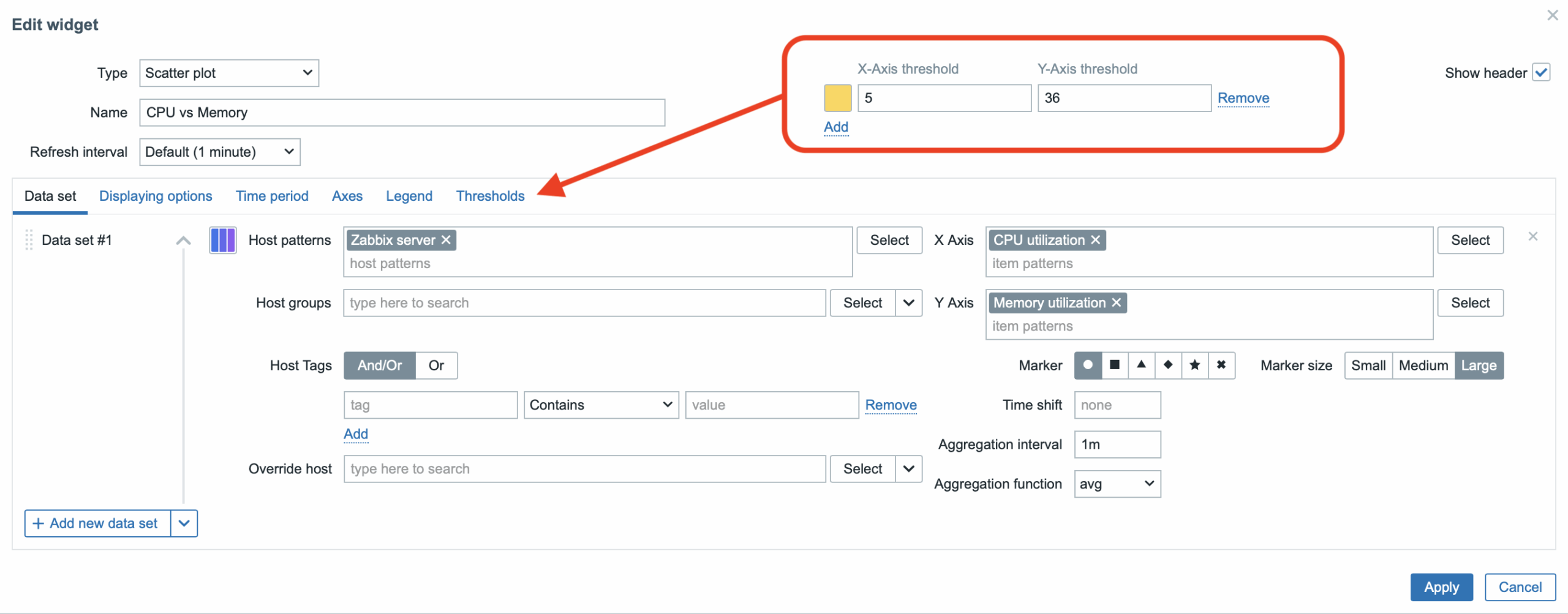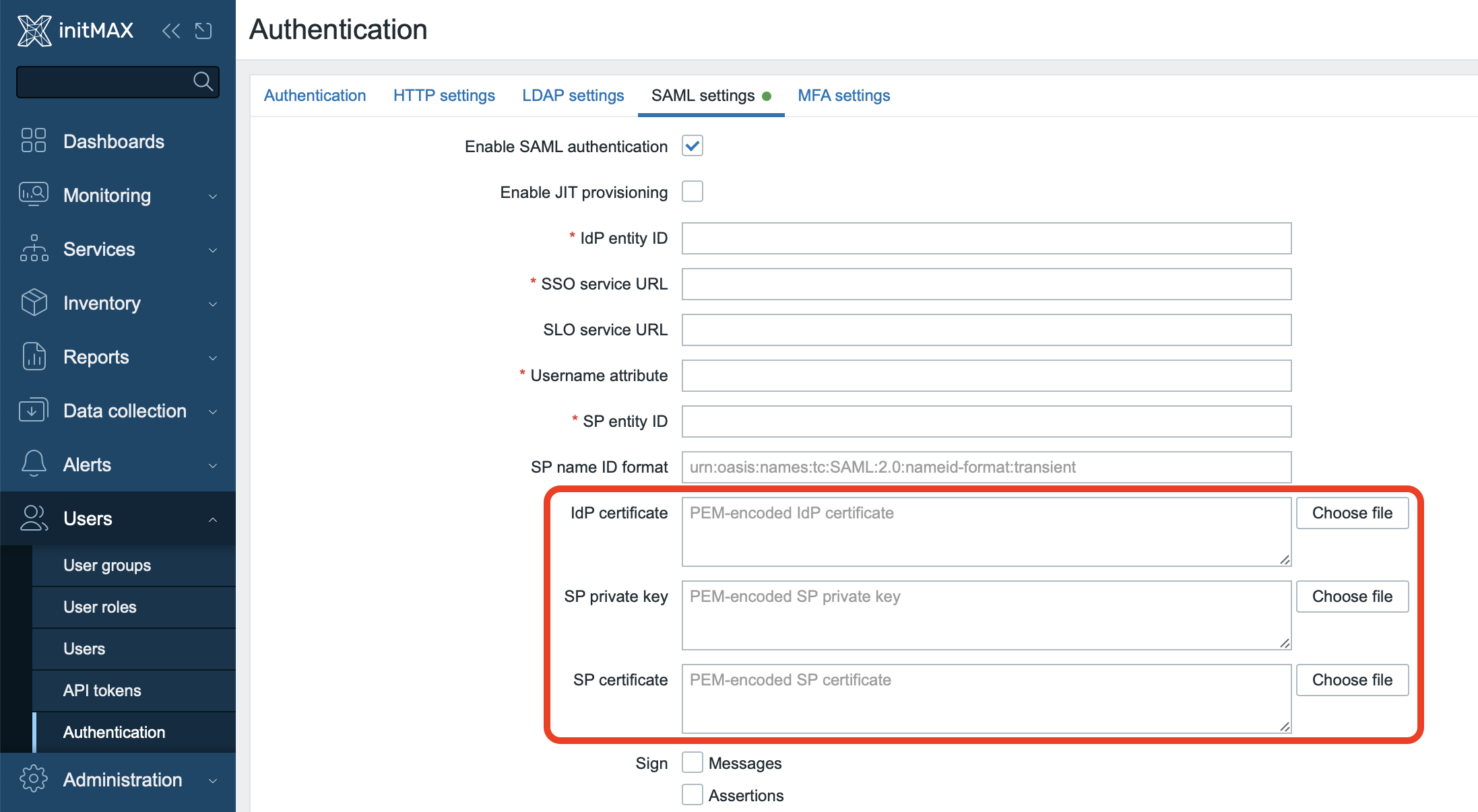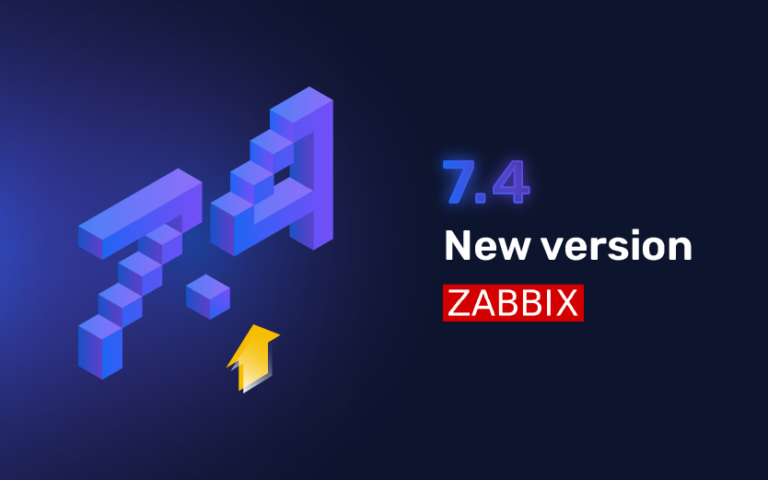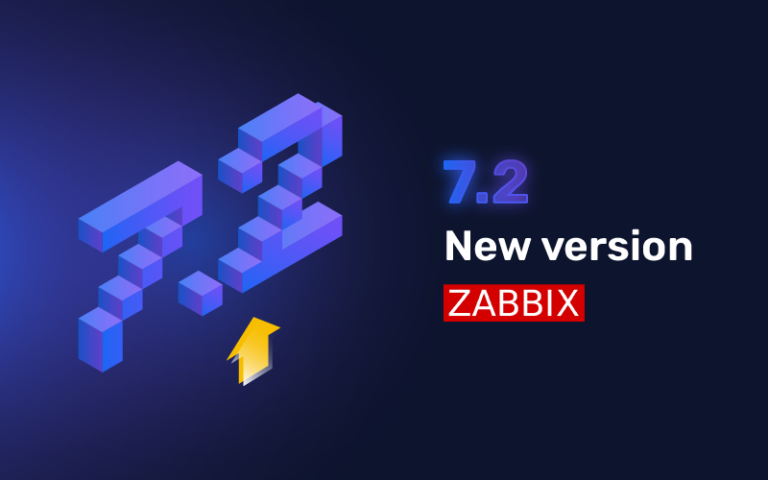Zabbix version 8.0 is almost here!
The new Zabbix 8.0 release will bring a number of exciting new features.
| Contact us for a free consultation | CONTACT US FOR A FREE CONSULTATION AND DEMO |
|
We are preparing thematic webinars for you |
|
| Training for the latest LTS version (Zabbix 7.0) | MORE INFORMATION ABOUT THE TRAINING |
| You can also explore our DEMO Zabbix. Log in using the “sign in as guest” button. | SIGN IN TO DEMO ZABBIX |
Widget Scatter Plot
Simply put: you take two metrics (X and Y axis) and Zabbix will plot points for each host/time interval. At a glance, you can see correlations (or the lack of them), clusters of problematic machines, and anomalies that could easily be missed in a classic time-series chart.
Benefits
- Metric relationships: e.g., “when CPU increases, does RAM also increase?”
- Outliers: quickly detect servers that stand out.
- Visual triage: instantly see where to focus first.
How it works
- Datasets: multiple sets; each has an X-Axis item and a Y-Axis item.
- Host filtering: Host patterns / Host groups / Host tags.
- Aggregation: Aggregation interval (e.g., 1m) + function (e.g., avg) → one point per window.
- Appearance: choose marker and size; tooltips with values; time shift for period comparison.
Thresholds
Combined conditions for X and Y change the point’s color, e.g., X ≥ 5 AND Y ≥ 36. Multiple rules = multiple colors → anomalies become instantly visible (see image).


Example Scenarios
- CPU load vs. Memory usage
X axis: average CPU load
Y axis: percentage of RAM used
→ Quickly shows whether hosts with high CPU also have high RAM usage. Great first diagnostic for “CPU bound” vs. “RAM bound.” - Disk usage vs. I/O latency
X axis: disk utilization (%)
Y axis: latency (ms)
→ Identifies servers with overloaded storage. The combination of high utilization + high latency is a red flag for I/O. - Network traffic vs. Error rate
X axis: outgoing/incoming traffic (bps)
Y axis: error rate (dropped packets, errors)
→ Finds machines with low traffic but many errors – typically bad links, duplex, MTU, or driver issues. - Response time vs. Availability (services/apps)
X axis: average response time (ms)
Y axis: availability (%)
→ Differentiates “slow but stable” vs. “fast but unreliable” services. A strategic view for prioritizing team effort.
Storing SAML certificates directly in the database
You can now configure Zabbix to store SAML certificates directly in the database. Simply set the following option in the frontend configuration file (typically /etc/zabbix/web/zabbix.conf.php):
$SSO['CERT_STORAGE'] = 'database';This eliminates the need to upload certificates directly to the server’s file system. This solution brings several benefits, especially:
- Easy configuration directly via the web interface.
- Unified certificate management in High Availability (HA) deployments.
- Simplified administration of the entire SAML configuration.

Overview of minor improvements
New and updated templates
New Templates:
Updated Templates:
Zabbix Download and Other Useful Links
- Zabbix 8.0 is available for download here: www.zabbix.com/download
- Full documentation for the new version can be found here: https://www.zabbix.com/documentation/8.0/en/manual/introduction/whatsnew800
As official partners and strong enthusiasts of the Zabbix platform, we offer comprehensive, top-level services in all areas of Zabbix monitoring. If you’re interested in a live demonstration of Zabbix installations at our customers’ sites, we’d be happy to show you Zabbix in action.





Give us a Like, share us, or follow us 😍
So you don’t miss anything: